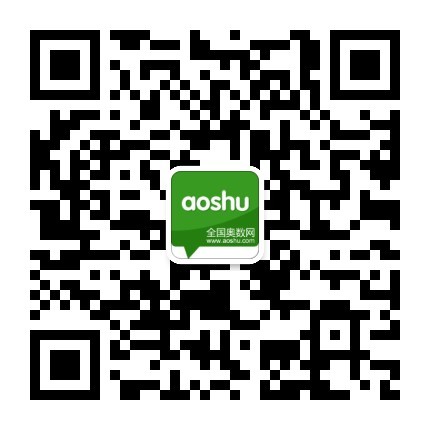Ъзэ(yЈЈ)
ј(guЈЎ)ыHW(xuЈІ)аЃ
ыSr(shЈЊ)(wЈЈn)
ыSr(shЈЊ)НтД№
аЁW(xuЈІ)аТТ
жиќc(diЈЃn)жаW(xuЈІ)
НЬW(xuЈІ)йYдД
ШЄЮЖЗ(lЈЈ)@
аЁW(xuЈІ)дю}
еZ(yЈГ)ЮФ
Е(shЈД)W(xuЈІ)
гЂеZ(yЈГ)
зїЮФ
Шег
КЯзї
ЁЁЁЁЁЁ ЁЁЁЁ
- аЁW(xuЈІ)ЃК вЛФъМ(jЈЊ)дю} ЖўФъМ(jЈЊ)дю} Ш§ФъМ(jЈЊ)дю} ЫФФъМ(jЈЊ)дю} ЮхФъМ(jЈЊ)дю} СљФъМ(jЈЊ)дю}
- ГѕжаЃК ГѕвЛдю} ГѕЖўдю} ГѕШ§дю}
- ИпжаЃК ИпвЛдю} ИпЖўдю} ИпШ§дю}
ЁЁЁЁЁЁ ЁЁЁЁ
ЁЁЁЁЁЁ ЁЁЁЁ
- еnБОЃКеZ(yЈГ)ЮФеnБО Е(shЈД)W(xuЈІ)еnБО гЂеZ(yЈГ)еnБО
- еnМўЃКеZ(yЈГ)ЮФеnМў Е(shЈД)W(xuЈІ)еnМў гЂеZ(yЈГ)еnМў
- НЬАИЃКеZ(yЈГ)ЮФНЬАИ Е(shЈД)W(xuЈІ)НЬАИ гЂеZ(yЈГ)НЬАИ
- еf(shuЈ)еnИхЃКеZ(yЈГ)ЮФ Е(shЈД)W(xuЈІ) гЂеZ(yЈГ)
- НЬйYдДЃКНЬW(xuЈІ)г(jЈЌ) НЬгУј(shЈБ) НЬW(xuЈІ)еЮФ
ЁЁЁЁЁЁ ЁЁЁЁ
- Цкжадю}ЃКеZ(yЈГ)ЮФ Е(shЈД)W(xuЈІ) гЂеZ(yЈГ)
- ЦкФЉдю}ЃКеZ(yЈГ)ЮФ Е(shЈД)W(xuЈІ) гЂеZ(yЈГ)
- ЮдЊy(cЈЈ)дЃКеZ(yЈГ)ЮФ Е(shЈД)W(xuЈІ) гЂеZ(yЈГ)
- аЁW(xuЈІ)дю}ЃКвЛФъМ(jЈЊ) ЖўФъМ(jЈЊ) Ш§ФъМ(jЈЊ) ЫФФъМ(jЈЊ) ЮхФъМ(jЈЊ) СљФъМ(jЈЊ)
- еZ(yЈГ)ЮФдю}ЃКвЛФъМ(jЈЊ) ЖўФъМ(jЈЊ) Ш§ФъМ(jЈЊ) ЫФФъМ(jЈЊ) ЮхФъМ(jЈЊ) СљФъМ(jЈЊ)
- еZ(yЈГ)ЮФПМќc(diЈЃn)ЃКаЁW(xuЈІ)еnЮФ еZ(yЈГ)ЮФзїЮФ еZ(yЈГ)ЮФщзx ЮФбдЮФЗзg ЮФW(xuЈІ)ГЃзR(shЈЊ) еZ(yЈГ)ЗЈаооo еZ(yЈГ)ЮФзжд~ еZ(yЈГ)ЮФнoЇ(dЈЃo) еZ(yЈГ)ЮФйYдД
- Е(shЈД)W(xuЈІ)дю}ЃКвЛФъМ(jЈЊ) ЖўФъМ(jЈЊ) Ш§ФъМ(jЈЊ) ЫФФъМ(jЈЊ) ЮхФъМ(jЈЊ) СљФъМ(jЈЊ)
- Е(shЈД)W(xuЈІ)З(lЈЈ)@ЃКШЄЮЖЕ(shЈД)W(xuЈІ) Е(shЈД)W(xuЈІ)ЙЋЪН Е(shЈД)W(xuЈІ)жЧСІю} Е(shЈД)W(xuЈІ)аЁЩёЬН Е(shЈД)W(xuЈІ)ЙЪЪТ Е(shЈД)W(xuЈІ)Дѓ Е(shЈД)W(xuЈІ)ЮФЛЏ Е(shЈД)W(xuЈІ)гЮђ Е(shЈД)W(xuЈІ)ЪжГѓ(bЈЄo) Е(shЈД)W(xuЈІ)йYдДь(kЈД)
- гЂеZ(yЈГ)жЊзR(shЈЊ)ќc(diЈЃn)ЃКгЂеZ(yЈГ)зїЮФ гЂеZ(yЈГ)еZ(yЈГ)ЗЈ гЂеZ(yЈГ)Юд~
- гЂеZ(yЈГ)дю}йYдДЃКгЂеZ(yЈГ)дю}НтЮі гЂеZ(yЈГ)йYдДь(kЈД)
ЁЁЁЁЁЁ ЁЁЁЁ
ЁЁЁЁЁЁ ЁЁЁЁ


